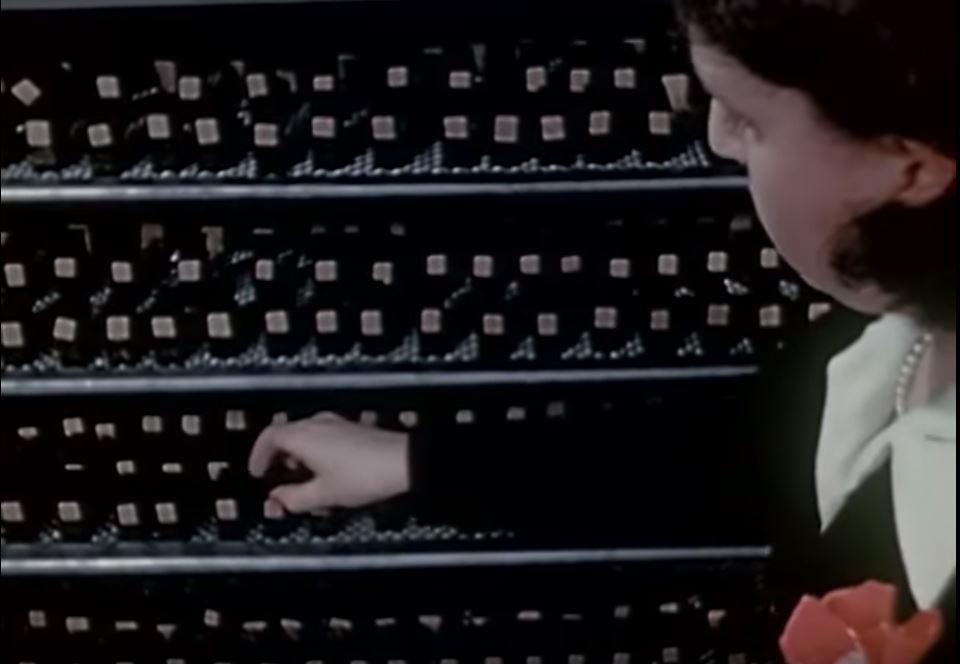Many thanks to SWLing Post contributor, Charlie (W4MEC), who shares this fascinating film which documents the production and calibration of crystals in 1943. I had no idea of the amount of labor and attention to detail this process required–an absolutely fascinating process:
UPDATE (08/09/2022): the YouTube account associated with this film has been deleted by the owner.
Click here to view this same film now hosted by the Antique Wireless Association.


Does anyone make crystals? I see the microprocessor SMT crystals in volume. How do they make them? same way?
As a components engineer working in the computer industry, I had the opportunity to visit a bunch of crystal manufacturers to do source inspections. NONE of the outfits were huge companies. There always was a ton of art that went into the manufacture of these devices as well as science. It was dirty and slow. At one of the companies (Valpey?) I recall rough “netting” polishing wheels that had Radio Shack DX160 receivers on the shelf above each of the wheels.
One of the suppliers gave me a autoclave produced quartz crystal, but it was stolen off my desk yrs back.
My,had no idea the manfacture of these things was so labor intensive.
Had no idea what the people at Peterson (80/40m tx),JAN crystal (10m cb
conversion and two meter rigs) and Bomar (scanner crystals) went through.
Before WWII crystals weren’t too common. Radio/electronics was still in the early days. Any consumer electronics wouldn’t use them. Hams had to transmit signals that were almost as stable as crystal control, but that was not long before the war.
Crystals were generally something made to order, not something off the shelf.
Then came the War. Endless equipment bring churned out, crystal control meant not only stability, but the signal would be on the needed frequency. Dial calibration wasn’t so exact back then, and would have required tedious effort on each unit to make it so. But each transmitter could be delivered with a box of crystals so they’d always be on the right frequency, but also move around as needed.
So suddenly crystals became a commodity. Churn them out ahead of time, suddenly an off the shelf thing, rather than each crystal custom ground.
And after the war, all that surplus. Not just the equipment, in 1972 I could still buy a Command set transmitter here in Montreal for $9.99 (ironically it had a really good dial, no crystals needed, but had one or two with an magic eye tube for adjusting to a specific frequency) in 1972.
The crystals were even more plentiful, since many s transmitter came with a box of crystals, and I think some manufacturers were told to just keep making things until they were told to stop, so there was surplus that didn’t even see use. Some were useless frequencies, some were useful. But hams building equipment would build around those surplus crystals, to make use of what was available. I once saw a kit that used oddball crystals, but when beat against each other, they generated a 100KHz signal, fir calibrating your receiver. Some crystals were almost right, so you’d open it up, the cases were held together with screws, and grind the crystal blank s but to raise the frequency. Scribbling on it with a pencil would lower it a bit.
So people got used to cheap crystals. That changed when 2M FM took off, suddenly a shift to channelized operation, and thus a need to be precise, so spend the money on custom made crystals.
You could get commodity crystals, for standard frequencies like 100KHz or 1MHz, and CB when they came along, and color subcartier crystals for TV at 3.58MHz but generally you made do with those WWII surplus crystals.
But then in the early seventies ,as digital electronics came along (including synthesizers for 2M rigs to eliminate all those crystals) a larger set of commodity crystals became available. With digital dividers, odd frequencies were used to generate useful frequencies through division, a smaller and more stable scheme than LC or RC tuned oscillators. So a bigger selection off the shelf and cheap, hams started using those for ladder filters, which needed the crystals on the same frequency.
And because of digital circuitry, crystals became very common, in endless consumer equipment, but not many needed in each unit. So we get crystal like stability, but endless frequencies. No more banks of 30 crystals in the 51J4, or 46 or 80 crystals in any CB set.
You still needed custom crystals, but it became s less common thing. Which us why many of the places that did make custom crystals have closed down in recent years.
Michael